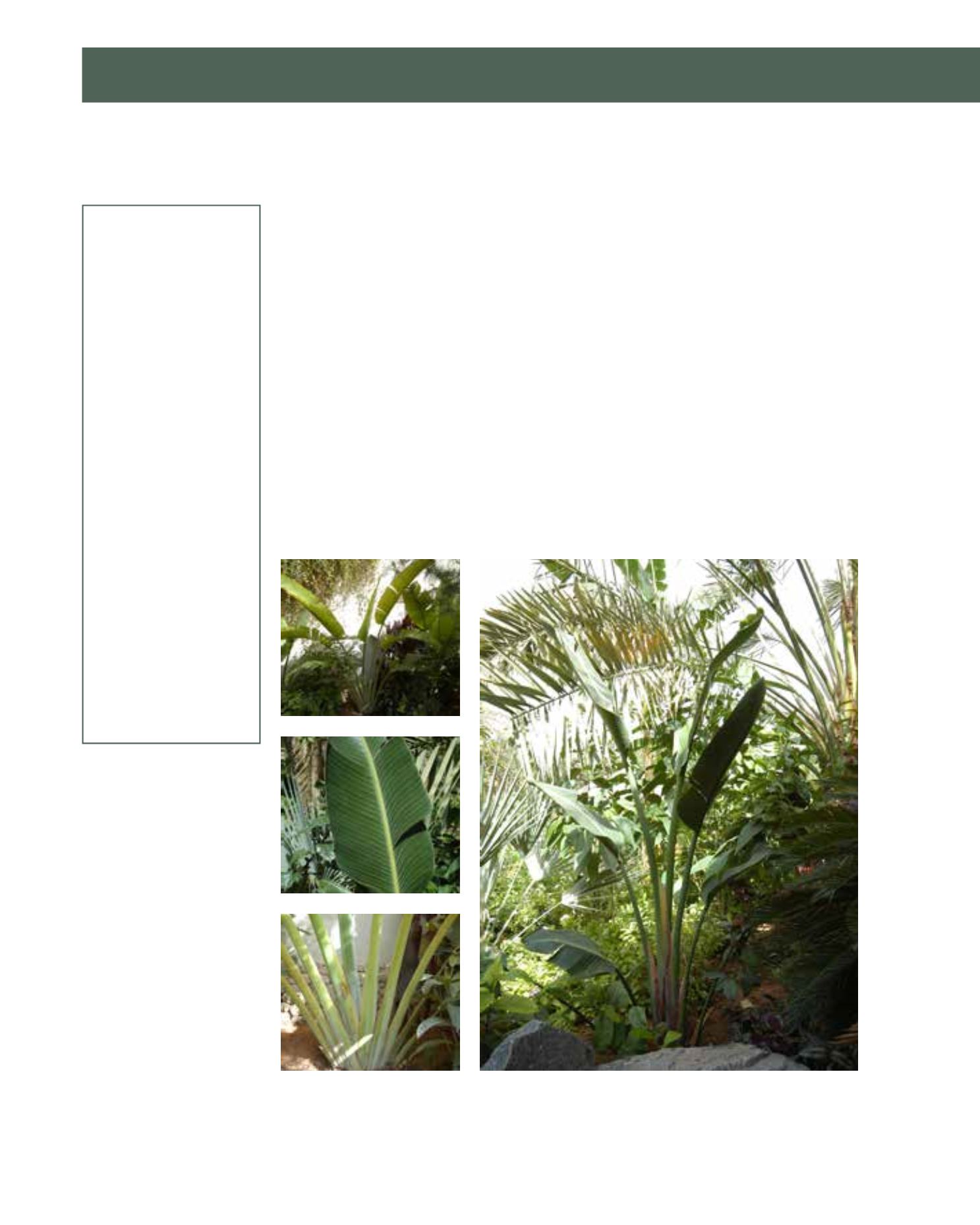

GENERAL
Origin
:
sub-tropical,
tropical
Vigour
:
fast growing
Humidity
:
very humid,
extremely humid
Propagation :
sowing and
pricking out,
division
Maintenance :
moderate
CONDITIONS
Urban climate :
vulnerable
Dessication :
vulnerable
Stagnant water :
vulnerable
Irrigation
:
high
Salinity/ppm :
moderate (1800
ppm)
Hardiness
:
0°C
SHAPE
Type
:
tree, shrub,
perennial
Height
:
3 m-12 m
Spread
:
3 m-5 m
Foliage
:
evergreen
FLOWER
Colour
:
white, blue
Size
:
45 cm
Period
:
April - June
FRUIT
Type of fruit :
capsule
Fruit size
:
5 cm
Often mistaken for banana trees, the Giant Bird of Paradise attracts pedestrians. It is also called
Natal Wild Banana. Evergreen, leathery leaves emerge from an oval stem that is, in fact, a cluster
of leaf stalks growing several metres tall. The huge, grey-green foliage is stiffer than banana leaves,
and split along its venation. The spades of such a frond measures about 2 metres in length. In
late winter, the first crested flowers appear in white, purple and blue. They are reminiscent of a
crane’s head, and this resemblance lent the plant its common name. Native to South Africa and
Mozambique, this plant does well in subtropical and tropical climates with no severe or prolon-
ged frosts. It takes situations in full sun or partial shade, but should be protected from strong
winds. It makes a strong accent in sheltered gardens in Arriyadh. Fertile soils with good drainage
meet its requirements, together with frequent irrigation and moderate to high amounts of ferti-
liser. It takes some salinity and alkaline soils, but does best with high levels of humus and some
acidic ground. Once established, it takes brief periods of drought. For the sake of its sculptural
appearance, this plant deserves a focal location. It also forms a dense screen. In evergreen forests
in the Eastern Cape, these plants attain a height of up to 12 metres. Unlike banana plants, the
shoots do not die after flowering, but in time form dense clumps. Separating suckers from such a
clump is the easy way to multiply this species. The black seeds may also be sown.
287
Strelitzia nicolai,
Strelitziaceae
Giant Bird of Paradise,
Natal Wild Banana
















